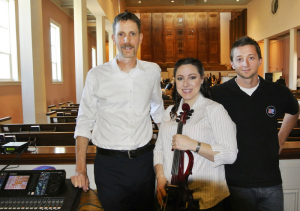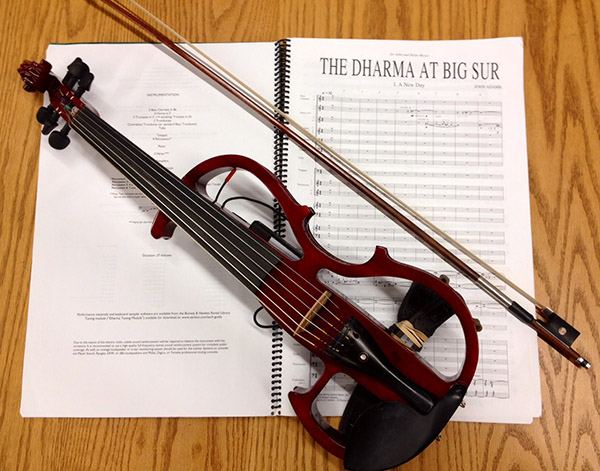After earning a Bachelor’s degree in music performance, I largely gave up being a musician and concentrated completely on learning the trade of being a sound engineer. Although I continued to play the viola for perhaps the first half of my time at USC in the Recording Arts program, I eventually quit the instrument altogether for what turned out to be 15 years.
When I moved back to Albuquerque in 2004, some of my old musician friends talked me into picking it up again and joining an orchestra. I was very rusty and had to proceed slowly and carefully so that I didn’t pick up any bad habits along the way.
Once I got back into playing, I was faced with a dilemma that I’d really not encountered much in the prior 15 years: that of whether or not I might use my sound skills, my music skills, or both on any particular job. I decided to keep the two worlds separate, feeling that two different mentalities were required to be as good as possible for either one. In other words, if I was playing music, I didn’t want to worry about sound, and vice versa.
This policy has worked well for me…until a few years ago. That’s when my friend, violinist and conductor David Felberg, decided together with violinist Debra Terry that she would perform “The Dharma at Big Sur” by John Adams with the Albuquerque Philharmonic Orchestra. I’m a member of the orchestra, playing violin this season. When David told me about the project, I volunteered to take care of the sound mixing duties.
This particular piece of music has specific technical requirements, not the least of which involves the very rare 6-string electric violin. We’ve all seen the 5-string variety, which is basically a hybrid of a viola and a violin, with open strings on C, G, D, A and E. Well, I came to learn that the 6-string violin has an even lower string—low F, a 5th lower than the low C on a viola.
Debra told me that finding that F string was quite challenging, as there were only a couple of sources in the world. She showed me the instrument, and I couldn’t believe how difficult it was to play due to the close string spacing. She had mastered the solo violin part, of course, so my job became managing the process of specifying and procuring an appropriate PA system for the two concerts we were to put on in late October.
The Spec
It’s always great to have friends in the business, so I called up Marsh Shamburger, owner of AE Productions (a regional sound company) in Albuquerque, and told him about the project. Based on my list of requirements, Marsh detailed a list of equipment along with a nice rental price and the promise of an excellent system guy to go along with it.
Although the technical requirements as listed in the score of the Adams piece are quite specific, we felt that for the venues we were playing, a medium-sized and hopefully low-profile PA would be best.

Marsh included two each per side of QSC KLA12 powered tops, and one each per side of KW131 powered subs. Center fill and a wedge for the conductor were JBL VP7212Ms. The console was a Yamaha LS9-32. In testing the PA, I was impressed with the ease of setup with these QSC boxes, and they sounded pretty good, too. Plenty of power and coverage for the performance venues — two churches that each sat maybe 500 people.
The show didn’t need a lot of microphones. The Adams score tech info recommended miking the orchestra, but stated that it was not required. I ended up using three Neumann KM184s: two on the harps just to make sure they were heard in certain passages, and one on the principal upright bass for some attack in the low end. I felt that the rest of the orchestra did not need balancing, only that the electric violin should stay on top. This was not always easy considering all of the extra percussion involved.
Debra’s 6-string electric violin had a headphone jack and a “line out” jack as well, each with a 1/8-inch connector. I made up a special cable with a Neutrik 1/8-inch right angle plug into a TA5F to connect with a Lectrosonics LMA transmitter. She used the headphone jack for her own monitor—I had suggested that she acquire “good earbuds” beforehand and to get used to them. This worked out quite well since she had control over her own volume, and the setup was very simple. The violin’s output was fairly low, certainly not a true line level, but it was plenty for the transmitter input.















